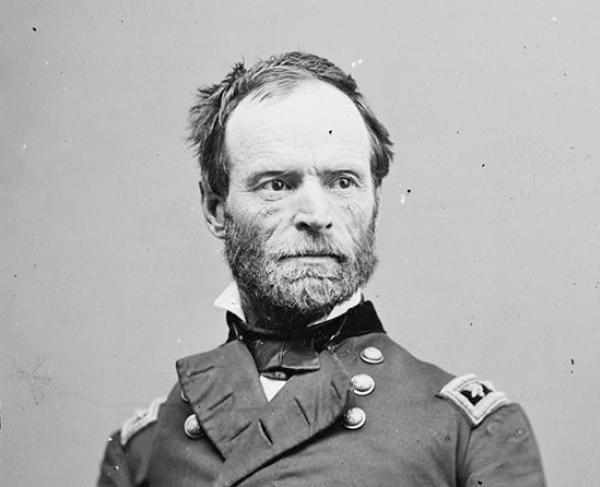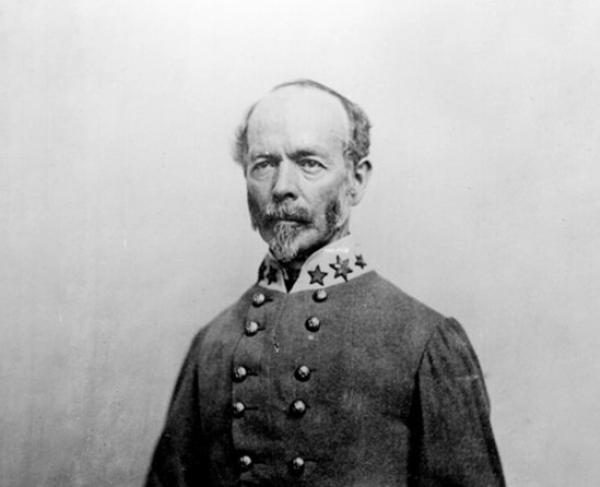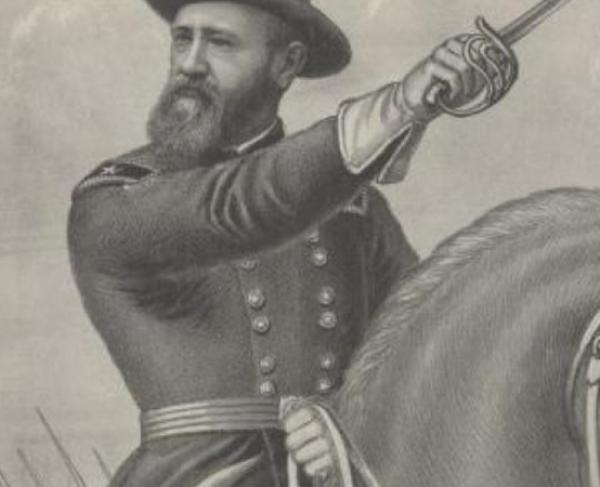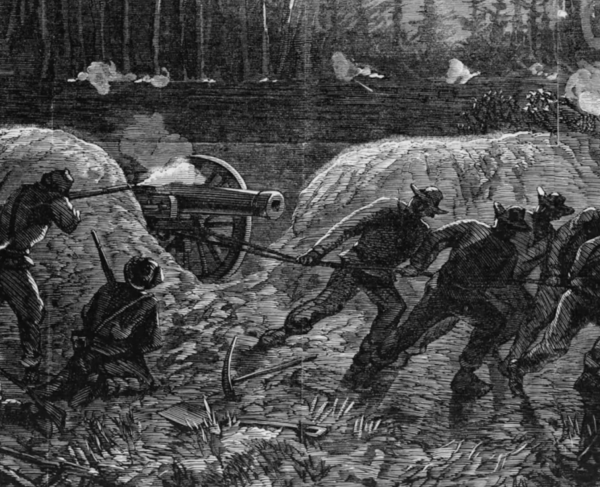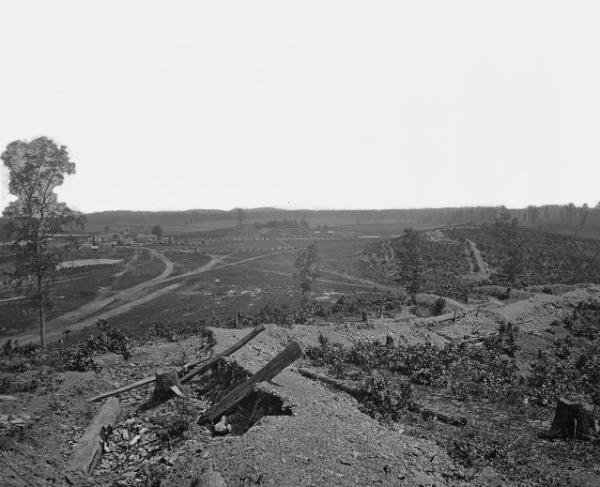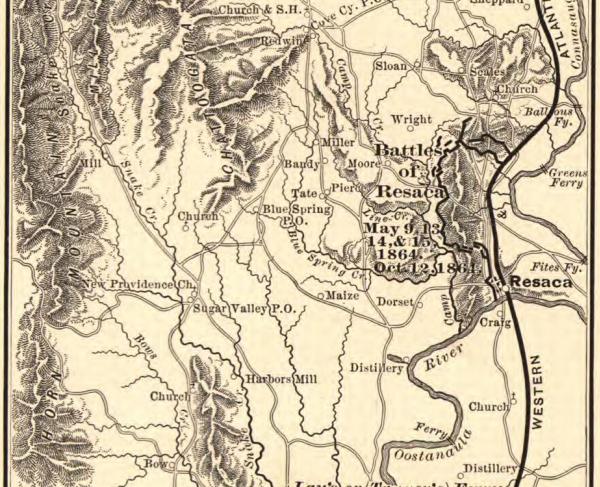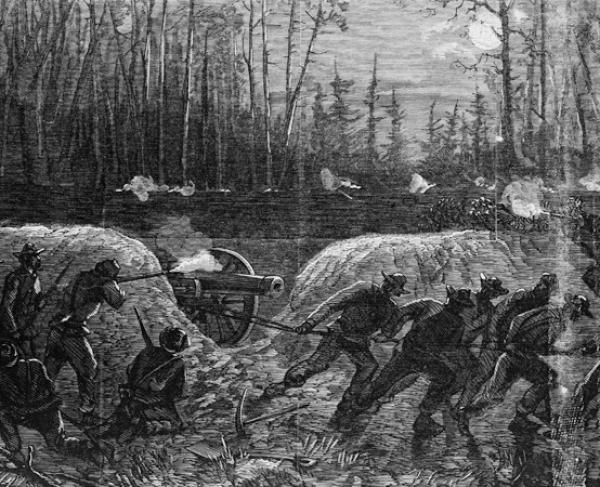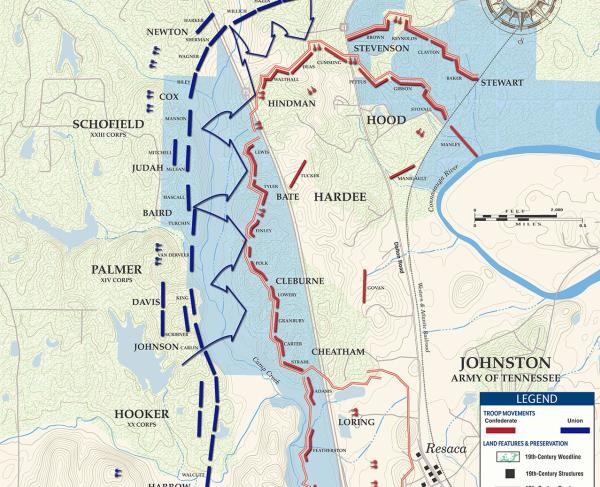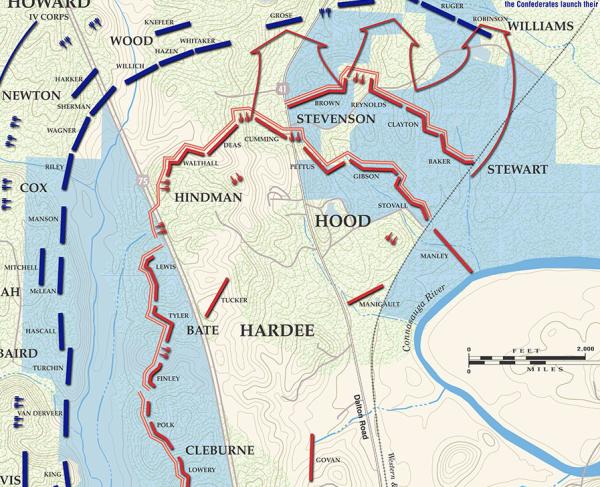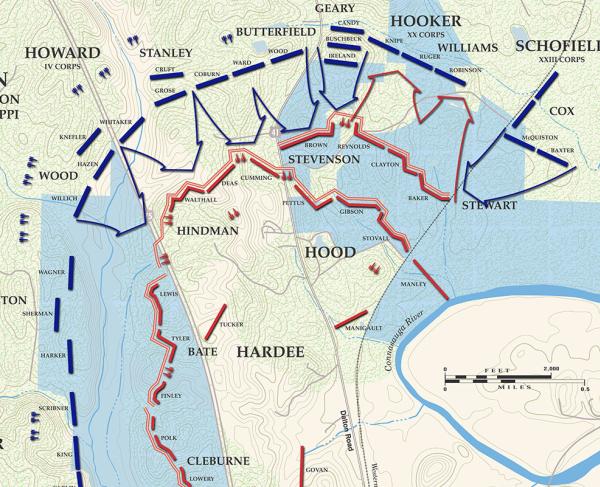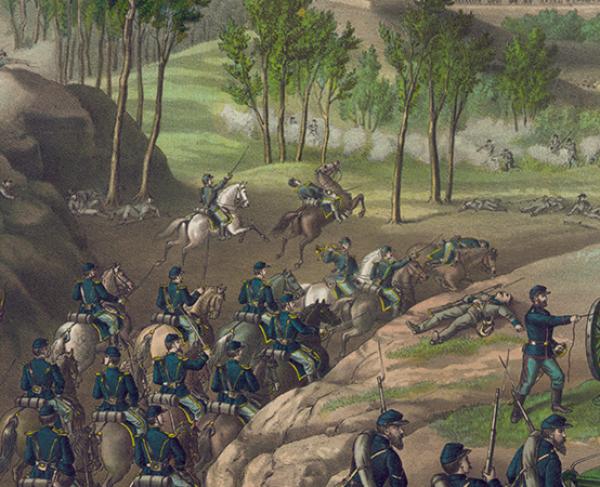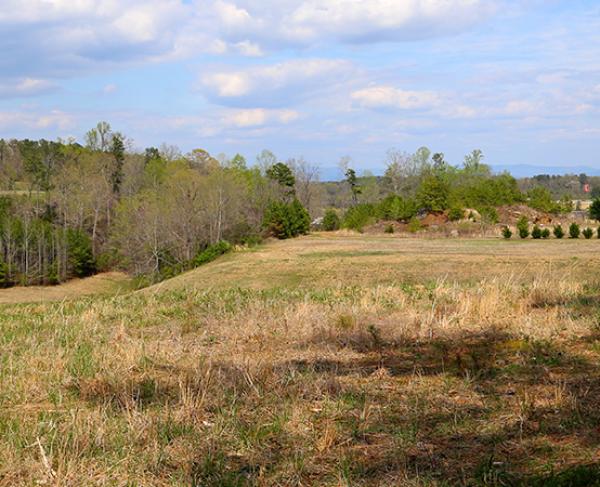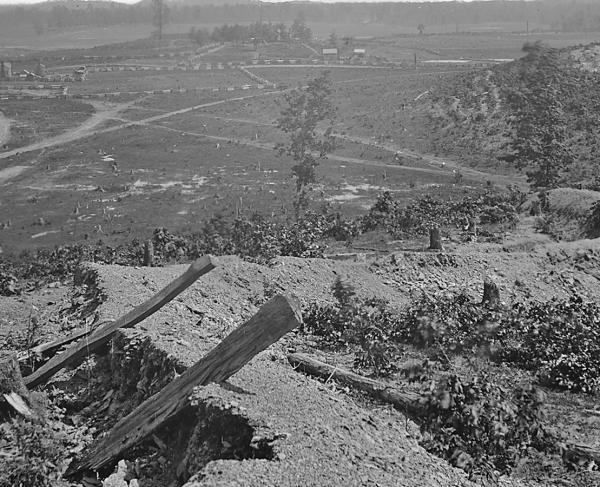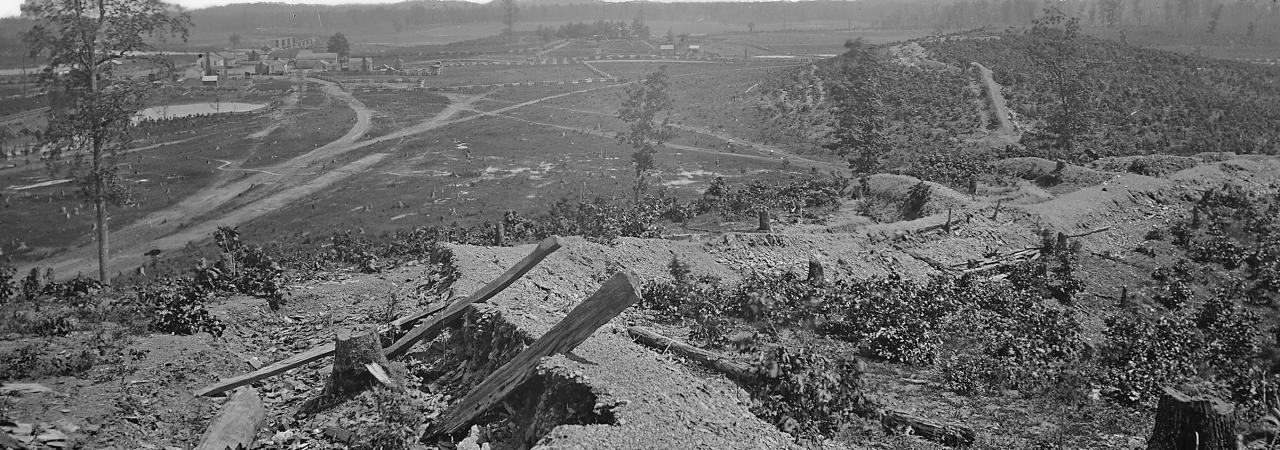
Resaca
Gordon County and Whitfield County, GA | May 13 - 15, 1864
In the summer of 1864, Union General William T. Sherman campaigned to capture the vital city of Atlanta, Georgia. From May 13-15, 1864, Sherman’s Federal armies fought Confederate General Joseph E. Johnston’s entrenched army in the first large-scale fight in the Battle of Resaca. Though inconclusive, Johnston was forced to retreat from the field due to a wide flanking maneuver by Sherman.
How It Ended
Inconclusive. After stopping repeated Union assaults along his lines, Johnston believed he had won a victory. However, during the 15th, Thomas W. Sweeny’s division from the XVI corps crossed the Oostanaula River, flanking Johnston and forcing him to retreat from the field. The Battle of Resaca was the first battle in the Atlanta Campaign.
In Context
In the summer of 1864, Union General William T. Sherman launched a campaign to capture and take the vital Southern city of Atlanta, Georgia. To succeed in this, Sherman used his massive armies to flank around the Confederates under the command of General Joesph E. Johnston. Sherman’s plans were first to attack the Confederate army at Rocky Face Ridge while sending a flanking column to the Federal right, cutting off Johnston’s supply line along the Western and Atlantic Railroad at Resaca. To accomplish this, Sherman tasked James B. McPherson and his Army of the Tennessee.
On May 5, Confederate General Joseph E. Johnston ordered Brigadier General James Cantey’s infantry brigade to Resaca, a small town along the Western & Atlantic Railroad on the north bank of the Oostanaula River, five and a half miles east of Snake Creek Gap. Johnston did this to secure his vital supply line from Atlanta. That same day, Union General William T. Sherman attacked Johnston on Rocky Face Ridge 17 miles to the north. Though a brutal fight, Sherman’s main thrust was not at Rocky Face Ridge; instead, it was further to the south where he moved a flanking column to threaten Johnston’s flank at Resaca. Sherman tasked Major General James B. McPherson with taking Resaca.
May 13th: By May 13th, James B. McPherson’s army arrived in front of Resaca and immediately came under fire from Confederate cavalry. After some initial fighting, McPherson’s men pushed the Confederates back towards the town, taking Bald Hill in the process, which provided an easy defensive position in the area. Worried that Johnston would send troops to drive him back, McPherson ordered his men back to their original positions at Snake Creek Gap. When Sherman learned this, he was disappointed “beyond measure,” as he wrote to McPherson, telling him to dig in while he brought the rest of the army through Snake Creek Gap.
May 14th: By May 14, Johnston’s Confederate army was positioned north and west of Resaca, stretching four miles, with its left on the Oostanaula River and the right extending to the Conasauga River. Camp Creek cut across most of Johnston’s front, creating an obstacle for the Federals. As Sherman’s forces marching from Snake Creek Gap paralleled the Confederate lines, Sherman ordered attacks to keep the Southerners occupied. At the same time, Thomas W. Sweeny’s division of the XVI Corps crossed the Oostanaula four miles downstream from Resaca at Lay’s Ferry, beyond the Confederate’s left, to threaten the railroad.
Meanwhile, late in the morning, Federals from Major General John Schofield’s XXIII Corps and Major General Oliver O. Howard’s IV Corps attacked across Camp Creek “with quicksand in places and steep muddy banks.” Schofield’s leading division under Henry M. Judah attacked without proper knowledge of the ground and was subsequently stalled in the attack and thrown back. After Judah’s attack, Brigadier General Jacob Cox’s division of Schofield’s corps entered the battle and was later thrown back. The XIV Corps divisions of Brigadier General Absalom Baird and Brigadier General Richard Johnson also charged, managing to cross the creek before withdrawing under heavy musketry and cannon fire. On the Confederate line, Major Generals Pat Cleburne and Thomas Hindman’s divisions repelled the attacks, but General William Bate’s division bore the brunt of them.
The Federal assault on the Confederate right center petered out around 3:00 p.m., having achieved nothing but casualties. Following their failed attacks, the Federal army bombarded the Confederate works.
May 15th: On the 15th, Lieutenant General John B. Hood instructed his division commander Major General Carter Stevenson, to position a battery on Yankee artillery "annoying General Hindman's line." Stevenson ordered Captain Maximilian Van Den Corput's "Cherokee Battery '' of four Napoleons to be placed 20 yards before his entrenched infantry. Soldiers constructed an earthen lunette for the guns, but before connecting it to their mainline with rifle pits, Federals attacked the Confederate line. They were repulsed elsewhere, but two regiments from Federal Brigadier General John Ward's brigade stormed up to the Rebel earthworks. By then, Van Den Corput's infantry supports had run away, and the Union troops "entered the embrasures, striking down and bayoneting the rebel gunners, many of whom defiantly stood by their guns till struck down."
The Northerners received heavy fire and withdrew, leaving the battery unmanned. Neither side could move forward to claim the battery. By 3:00 p.m., both sides resorted to skirmishing and artillery dueling while the Confederate cannon sat in no man's land. "Come on—take those guns!" yelled the Southerners. "Come on and take 'em yourselves!" came the Northerners' reply. Finally, after dark, Brigadier General John Geary ordered troops to sneak forward, quietly dig through the earthwork, and with ropes, drag the four guns back into Union lines. The mission was successful.
2,747
2,800
Though his army succeeded in driving back Sherman’s attacks during the previous two days, Joseph E. Johnston learned that during the 15th, Thomas W. Sweeny’s division from the XVI corps managed to cross the Oostanaula River on pontoon bridges below the Confederate left. Realizing he had been flanked, Johnston ordered his troops to withdraw on the night of May 15-16. After crossing to the south bank of the Oostanaula, Johnston’s men attempted to burn the bridges, but the pursuing Federals quickly repaired them.
During the opening stages of the Atlanta Campaign, Sherman devised a plan to occupy Confederate General Joseph E. Johnston’s front at Rocky Face Ridge and attack his rail line at Resaca. If Resaca was captured, Sherman’s army could not only cut off Johnson’s line of retreat back to Atlanta but sever the Western and Atlantic railroad that fed the Southern army.
Despite winning on the field, Johnson’s cavalry failed to protect his extreme right and left flanks. As a result, by the 15th, elements of Thomas W. Sweeny’s division from the XVI corps managed to cross the Oostanaula River on the Confederate left, threatening Johnson’s line of retreat. Not wanting to endanger the safety of his army and the city of Atlanta, Johnson decided to evacuate Resaca and head further south towards Adairsville.
Resaca: Featured Resources
All battles of the Atlanta Campaign
Related Battles
98,787
60,000
2,747
2,800
